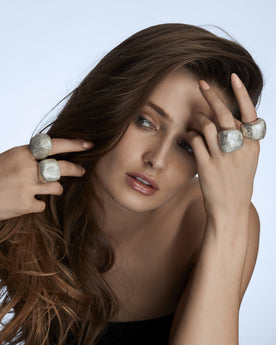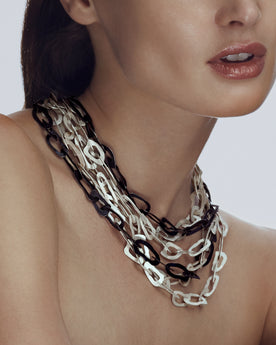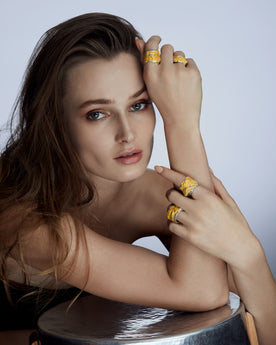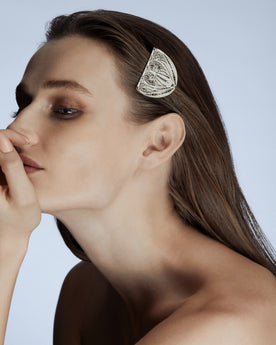The Ancient Art of Filigree

Filigree has been used in jewellery for centuries. This ancient, lace-like and delicate technique continues to distinguish the more skilled artisan from other gold and silversmiths.
What is filigree jewellery?
Filigree is a technique, which entails working with wires of fine silver or gold, twisting and plaiting them into a rope. While some artisans would leave the rope and its wires in their cylindrical shape, others prefer to flatten them after twisting by using a rolling mill.
The rope, whether flattened or not, is then, with the use of very fine-tipped tweezers, is twisted into coils, zigzags and other desired shapes, which are later used to fill in the space left in the prepared gold or silver frames. A combination of Borax and very fine gold or silver powder is then used to solder the piece together.
Filigree is often used in combination with granulation, the technique that involves making very small spheres of silver or gold, that are then soldered to the jewellery pieces. Granulation is popular for aesthetic value, but sometimes it is used strategically to cover up soldering points and junctions.
The ancient history of filigree jewellery
Dating back to 3000 BC, the earliest archaeological filigree pieces were found in Mardin, Mesopotamia. The technique travelled to other parts of the ancient world and was widely used, and very highly praised, for its beautiful details. Filigree pieces were worn by the Etruscans, Ancient Greeks and the Romans. It's believed to have travelled throughout the Mediterranean all the way to modern day Spain with the Phoenician merchants.
Theories around how the technique reached India and the Far East range between the Ancient Greeks bringing the technique with them to the region at the time of Alexander the Great, while another theory attributes the spread of the technique in India to the trade with Persia and Mesopotamia.
Filigree jewellery saw a second revival in the Iberian Peninsula with the arrival of the Arabs. The technique was quickly adopted into local tradition. However, that tradition survived more in Portugal than it did in Spain. The Portuguese silver and goldsmiths incorporated elements of their local design into their pieces and their unique motifs and style became very famous all over the world.
What made filigree design so popular?
Speaking more technically, the fact that filigree was mainly used as open work, i.e. it wasn’t soldered onto a background, added to its beauty by having light dispersing through the piece and showing all its details. This also ensured that its weight was kept at a minimum, which in turn, made it possible for artisans to make bigger pieces while maintaining ease of wear for the owner.
How common is this technique today?
In history, filigree was a fundamental part of any gold or silversmith’s training and formation. It was a stepping-stone towards becoming a respected gold or silversmith. Nowadays, while it is still taught in some specialised and traditional workshops, it’s not as widespread. It has become more of a specialisation rather than a ‘rite of passage’. While any filigree master is by default a skilled silver and goldsmith, the opposite is not always true.
Have a look at our limited edition filigree designs
Our Shefteshy collection includes a range of different handcrafted filigree pieces and is a celebration of the workmanship and skill required for the ancient technique of filigree. Browse our collection of sterling silver filigree rings and our beautiful filigree hair clips and accessories.












